If you havent heard of Polish artist EJSMONDT, you will be thrilled to have come accross this Interview. An emerging talented artist that is ready to spread his wings towwards new projects. He creates mostly inspiring porraits of local personalities with a complex and a time consuming technique. The characteristic of his works is that they are not easy to see at first! Here you can find out how he does it – what inspires his creativity and how it all started.
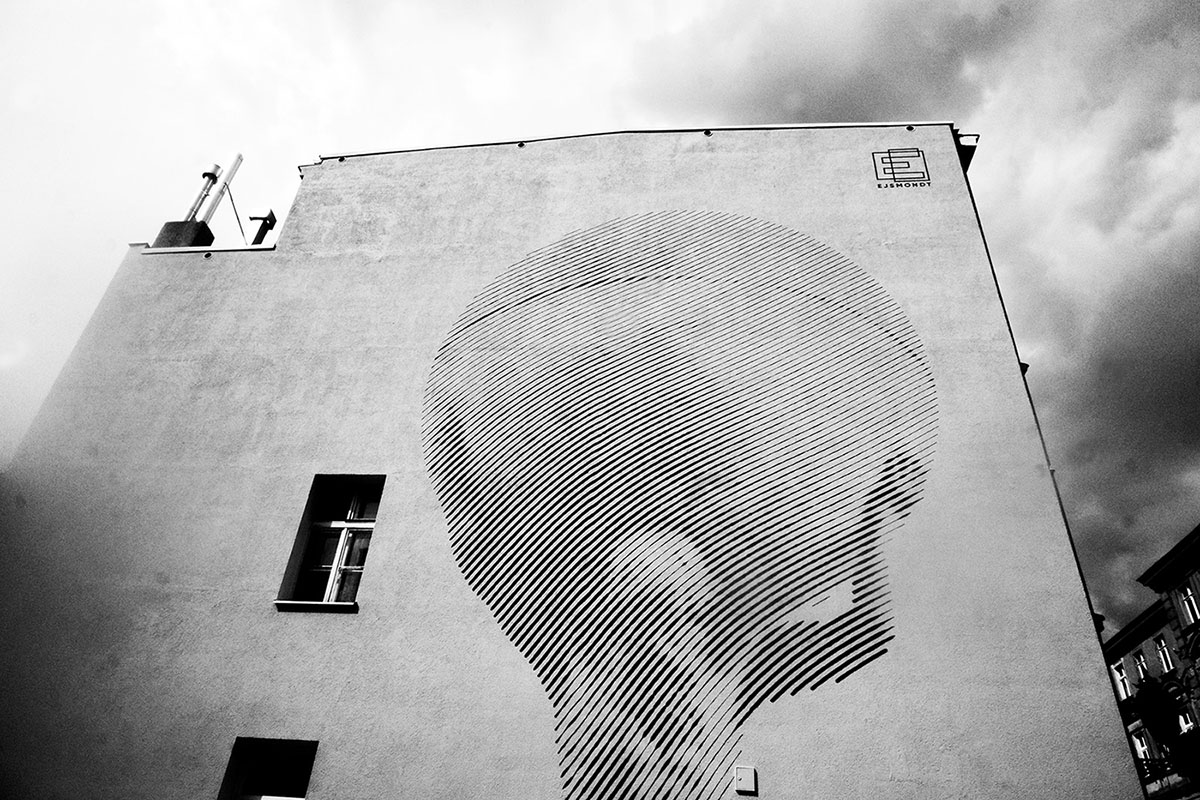
-What would you like to drink? Coffee, Tea, Beer, Soda or something else?
I have a few addictions in life and I fancy mixing them together. So I’d gladly smoke a cigarette while drinking coffee. Black, no sugar.
-Introduce yourself to us!
My name is EJSMONDT. I’m a public space art creator. Most of my works are experiments within the op-art movement. Currently, I focus mostly on making portraits.
-Where does your (tag) Artist name come from?
I see no reason and never felt the need to hide my art behind a moniker. I sign all of my works, both legal and illegal, with my real name. They’re mine and I’m not afraid of the consequences that could arise from someone’s ignorance. Art is not a crime. Moreover, I stay away from any sort of propaganda and I choose the people I portray with great care.
-How do you define yourself and why? Artist? Street artist? Something else?
The word ‘artist’ loses its weight and meaning if someone proclaims themselves as one. Everybody can call themselves an artist these days. Some people become artists by choosing an appropriate tag on their social media profiles, others by getting an art degree. I treat it as more of a relative thing, dependent on the opinion of the audience. Some people see you as an artist, some don’t. From my experience, I sometimes am an artist, according to some people, but if someone calls me a designer or a painter, I won’t mind and it makes no difference, because it’s also true. All of these are just names, labels.
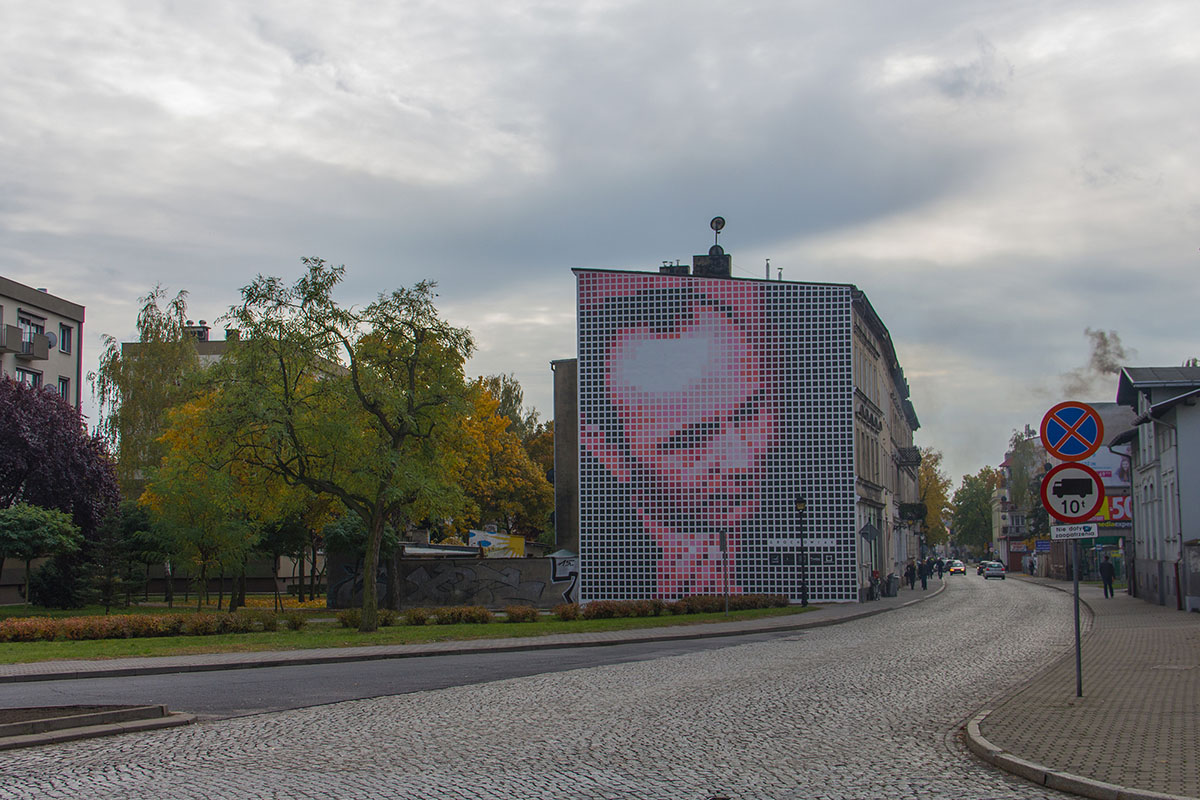
– How did it all start for you, and what is it nowadays?
Started quite accidentally, actually. I always did some painting or drawing, regardless of my occupation. And a lot of people knew about this. In 2015, a person approached me with a request to design a portrait of Stanisław Grochowiak, a Polish poet. It got me intrigued. The idea was to create a large-sized mural and a few guys who already did a few similar projects in the city were supposed to paint it. Now, I designed the portrait which consisted of a huge number of small squares in different shades, based on the Hermann grid. Later, I was just to supervise the works. But then it came to my attention that the painters want to use a projector to paint it, which I deemed as completely wrong, futile and impossible. They didn’t listen to my advice, though. So I decided to go all in and it turned out to be the best decision I’ve ever made. I got the medical clearance to work at heights, quit my job in a pub and library and I painted the whole portrait my way. And for the first time I felt like I’d done something unique; the kind of feeling that makes you finally feel fulfilled, it sort of gives you wings. Back then I thought I’d set the bar pretty high for myself and it would be really tough to best it. But my ever-growing dedication towards street art lead me to natural development as an artist. Jobs started cropping up and I just went with it, doing it to this day. It truly is my passion; I think about art every day and every day I feel like I evolve and develop artistically. Being able to just devote myself to it makes me really happy.
-What is the first thing you do when you get up in the morning?
My wife wakes up quite early for work. I wake up with her every day at 5am and make her breakfast.
-Street art is mostly a visually stimulating form of art. To add one more sense to it, what music would you pick to accompany your art work?
I cannot imagine working without music. I always turn to Nils Frahm during the designing stage. As for music for painting, it’s all over the place – you need different rhythms for different moods.
-In all forms of art, inspiration is crucial. What inspires you and how does that end up in your art?
Most of all, works of other artists. Still, the right music, architecture – these are also factors. I’m really into balancing on the edge of what’s abstract and real and within this field I can experiment on the optical experiences of the audience. These interesting dependencies and differences in visual perception in humans influence me the most.
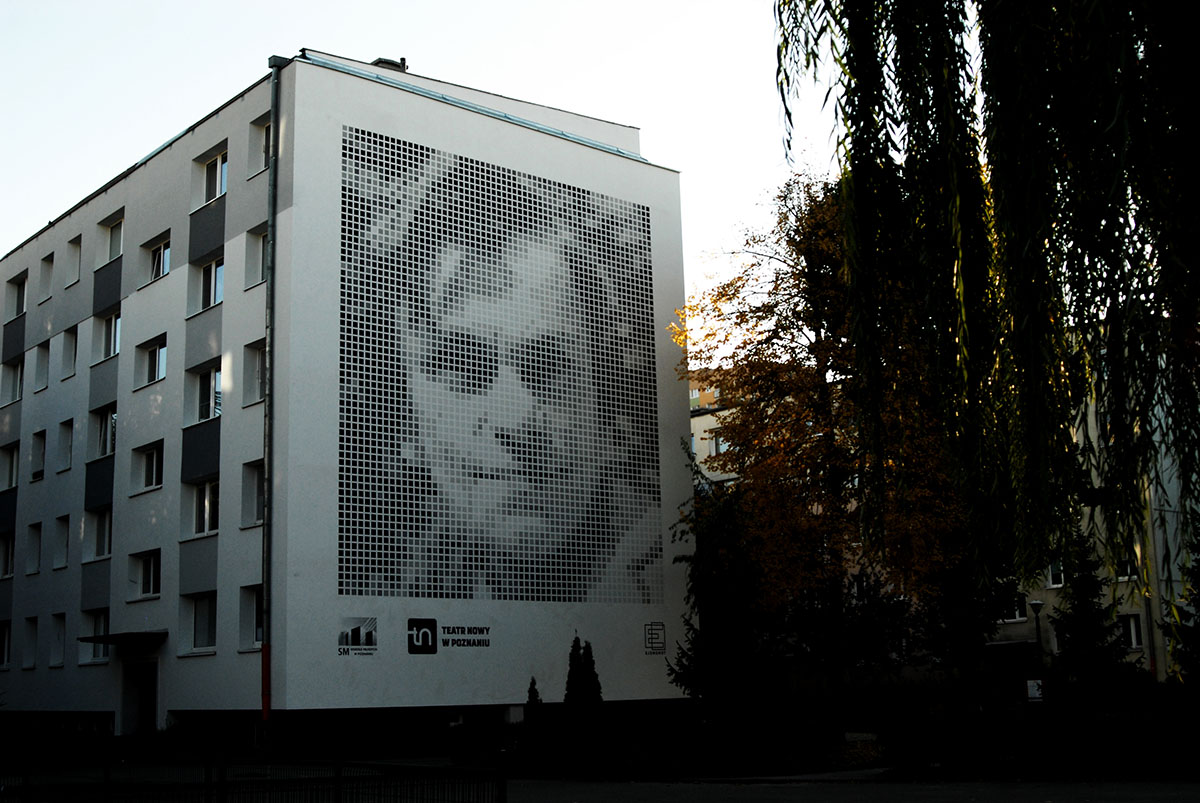
-What is the hardest part while working on a piece of art?
My technique is very specific. It requires immense patience and is accompanied by a certain amount of pressure, since there is no space for error or improvisation. Every single detail has to be carefully planned and in general the whole thing takes a lot of time.
-Do you have any artist(s) you admire? Can you pinpoint what it is that makes them so special for you?
There are a few, but there’s no point naming all of them here. I really admire the works of Sten Lex, they’ve set a certain direction for me, even though our techniques and ideas vary, it is because of them that I strive to seek new paths and different solutions that they didn’t take or use. Another influence is Wacław Szpakowski and his compositions of rhythmical lines. Thanks to him, I managed to be the first to create a portrait based on rhythmical lines of my own design.
-Which cities are the most inspiring for you as an artist?
In general, the architecture of socialist modernism in Europe inspires me, so cities of that sort certainly have a big impact on me. Thinking about it now, if I were to consider all the different factors and pick just one city, New York City would be the most stimulating one. Can’t know for sure though, never been there.
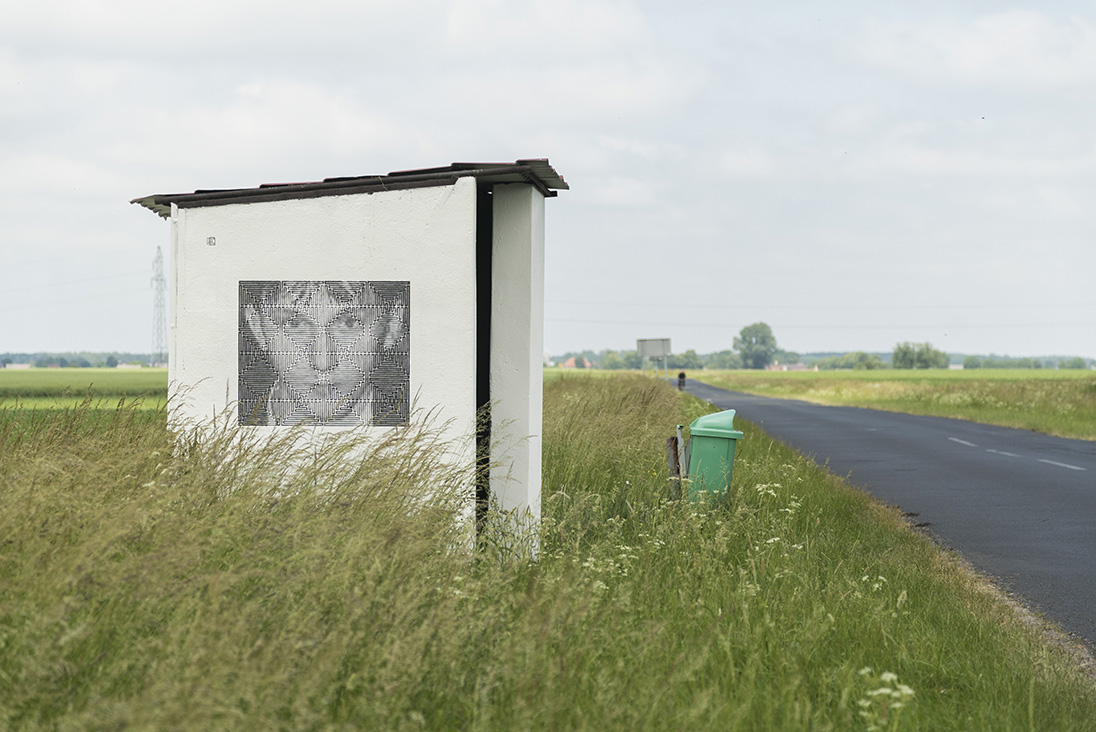
-What other passions do you have apart from art?
When there’s time, I enjoy meeting friends over some good boardgames. Absolutely love watching movies, you could say I’m cinephile in this regard. But these are not my passions. I only have one and I’ve already mentioned it.
-Do you have a special project that you hope to achieve some day?
At this moment I have three such projects, which I hope to do in the near future. The portrait of Peter Lindbergh, who was born in Leszno, my hometown. Project of quite the significance, since in his later years upon seeing my previous works, Mr Lindbergh personally agreed to this project, which is hugely important to me. And secondly, not a lot of people know that he hails from Leszno.
Aside from that, I have a portrait of aforementioned Wacław Szpakowski at the ready, which is based on four patterns of his rhythmical lines combined into one rhythmical line that consists of all the four patterns, pretty strong stuff. A great artist, he created works in the op-art movement before it even got its name. Majority of people consider Victor Vasarley, whom I value very much as well, as a precursor of op-art, but Szpakowski came earlier.
And next year marks the birth anniversary of my favorite science-fiction writer – Stansiław Lem. I would be a dream come true to paint his portrait in Cracow. Time will tell.
-Tell us a bit more about your art; does it include symbolisms, messages or repeated patterns? How has it evolved?
I’ll try to answer this one in a relatively brief fashion. Any given person that I’m portraying, in case of my legal works, is always in some way related to the place, history or the city itself. The design or the colors I choose are influenced by the location or the character that I’m going to portray – sometimes both, if possible. I try to use graphical forms that, despite all of the chaotic visual stimuli around us, kind of elicit a relation between a deliberate painting and a random recipient. To achieve that I design the painting to seem abstract, hide its realism. I make the recipient play my game, so to speak. The recipient is required to devote some time to the painting, change distance, perspective or even make a photo to then see it downsized. If I managed to engage them, the recipients discover the actual painting. This process of engagement and discovery makes the painting stick in the memory, or at least increases the chances of it happening. Due to this experimental approach I achieve my artistic, aesthetic, promotional and informative goals.

– How long time does your art work, on walls, usually survive for?
It’s hard to estimate how long they’ll hold. Many factors come into play. Quality of the surface, the type of paint used, exposure to sunlight, human malice. My works, both legal and illegal, remain intact so far and hopefully they’ll stay this way.
-What do you think, people feel or think of, when they see one of your works on the street?
When I work on a mural, it oftentimes happens that people approach me not understanding what I’m doing. They don’t even believe me when I explain everything. And as it usually is, when people don’t understand something, they refer to it with negativity. It’s funny how the same people disappear when the scaffolding gets taken down and the completed painting reveals itself. There are also people who truly admire the whole process. In both cases I’m perfectly aware that I’m presenting something that people haven’t encountered yet. This is enough for me.
-What are your creative plans for the future?
It’s hard to say what’s going to happen. I hope that at some point an opportunity to paint something abroad will come through. It’d be great to get invited to participate in a proper street art festival. But these are things that I don’t fully control.
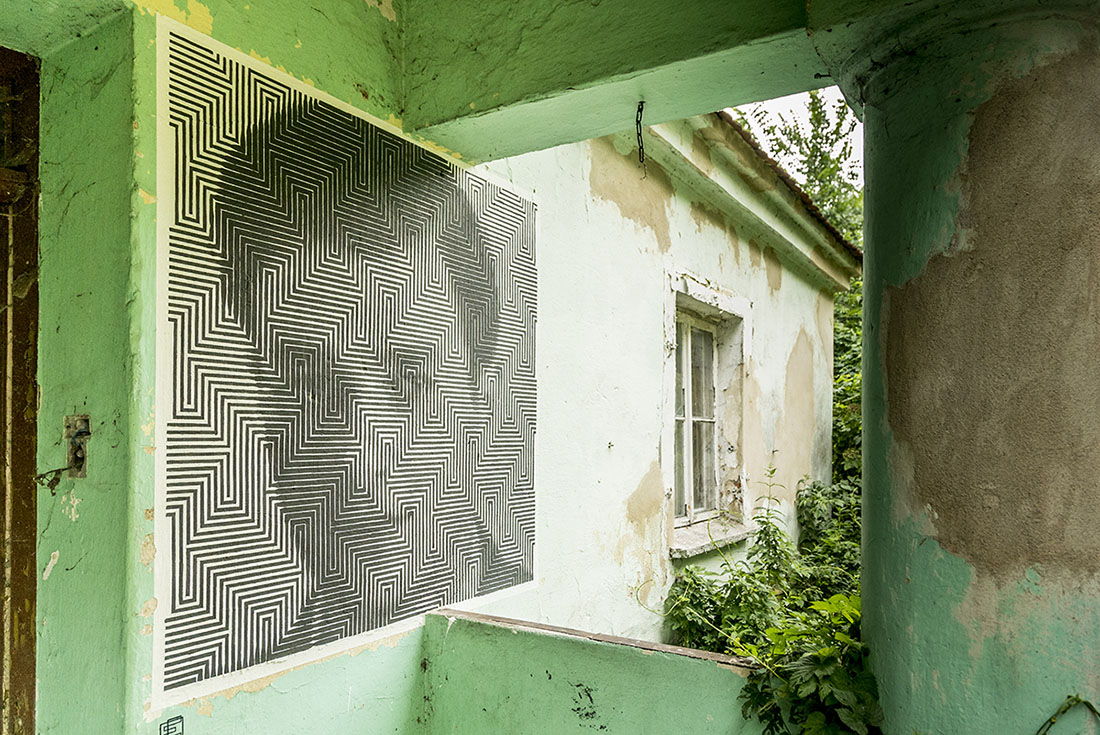
-Is there a little wish you have that not many people know about?
A lot of important matters in Poland keep going in the wrong direction. One day, I’d just like to get away from this place, as far as possible, ‘kidnapp’ my wife, take the dog along and just settle in New Zealand.
-Is there a specific thought or message you would like to pass to our audience out there?
Life and art aren’t worth a damn if you aren’t stubborn.
Thank you! It’s been great to get to know more about the mind and person behind such talented and inspiring works.
‘’I Support Street Art’’ team.
Follow on Instagram
artist profile : EJSMONDT
leave your comment